The long-awaited 2018 Husqvarna TE 250i just became the first mass-produced, fuel-injected two-stroke motorcycle sold in the U.S., stealing the holeshot to our shores from KTM’s near-identical F.I. machine, the 2018 KTM 250 XC-W TPI.
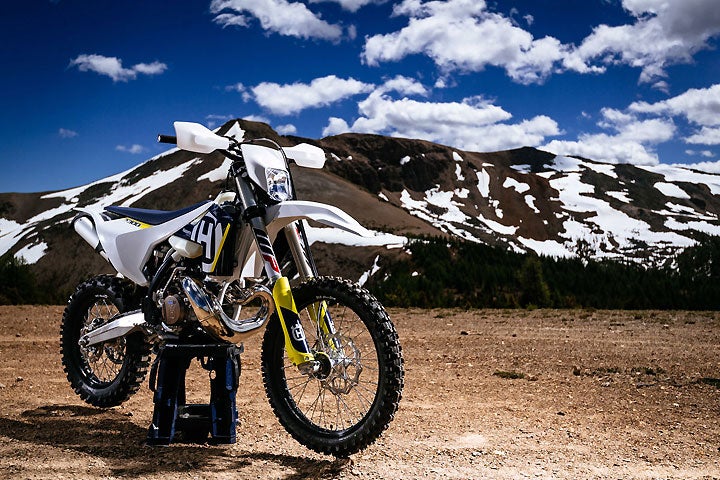
The Husqvarna TE 250i and the KTM 250 XC-W TPI are clearly defined by ground-breaking, yet relatively simple, nearly transparent and apparently foolproof electronic fuel- and oil-injection technologies. The systems were engineered to burn and waste less of either precious fluid at any altitude, offer performance-enhancing combustion efficiency, lower emissions, increase gas mileage by 40 percent and reduce exhaust smoke by half.
Amazingly, the new hardware that performs these feats adds just 6.5 pounds to the otherwise-identical carbureted bikes on which they’re based, and cost only $300 to $400 more than their progenitors.
Huskys Available Now
The exact number of Husqvarna TE 250i units imported Stateside is a mystery. Nonetheless, the entire allotment has arrived and bikes are now available at dealerships nationwide for $9599.
During initial test rides at the Husky’s world press launch on a ski slope in British Columbia and KTM’s on the legendary Erzburg Rodeo course in Austria, their fuel injection systems were nearly transparent and the motors behaved just like perfectly-jetted carbureted bikes, according to the attending journalists. The motors behaved just like perfectly-jetted carbureted bikes. This was the stated objective of KTM Off-Road Product Manager Joachim Sauer and the company’s R&D team, which has grown from fewer than 400 employees in mid- 2015 to more than 500 now.
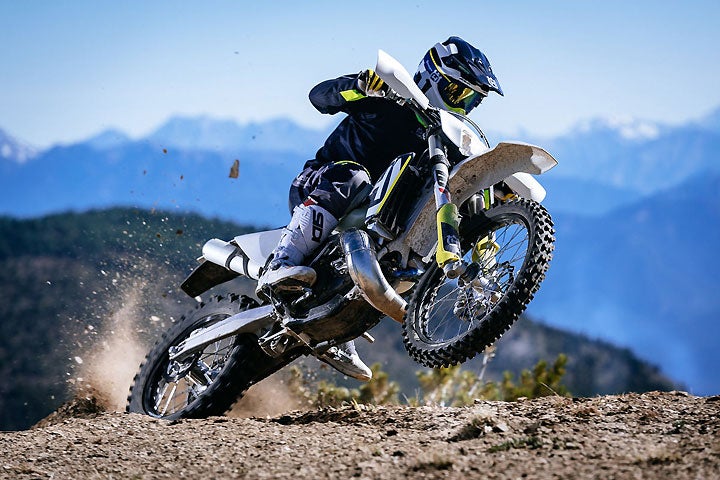
Confirming these media reports, Wally Wilson, the owner of Wheelsports, in Reynoldsburg, Ohio, said the TE 250i he has in stock “performs just like a perfectly jetted two-stroke.” The shop also ordered a 250 XC-W TPI, which he expects to see “any time now.”
KTMs Coming Soon
The execs in orange were a little more forthcoming about the 250 XC-W TPI’s release. Each of KTM’s 450 or so U.S. retailers will receive up to two units. Tackling this word problem with simple math intuition, between 500 to 650 will be available (all 450 of their U.S. dealers get at least one, and some are claiming to be getting two or more). Dealers around the country have been accepting deposits on the $9399 bike since it was announced more than eight months ago. Unveiled in May, the TPI was originally scheduled to hit showroom floors in October. We were recently assured by KTM that it’s days (not weeks) away from landing.
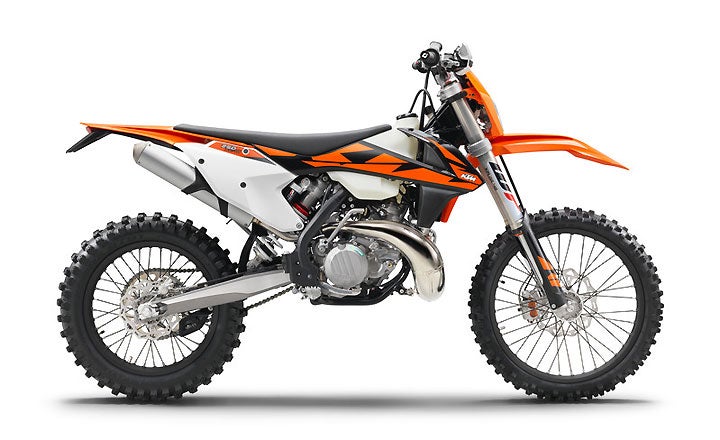
As initial information about the XC-W TPI became available, and overwhelmingly positive first-ride reviews were posted from those press launches, the Orange Brigade has been storming dealerships with money in hand. Our local KTM shop, 3 Brothers Racing, in Costa Mesa, California, has multiple deposits of more than $300 on the pair of TPI bikes they’re expecting.
Sitting 7703 feet above sea level, Sun Sports Unlimited, in Gunnison, Colorado, could probably sell a baker’s dozen of these KTMs. Adam Griffith, a member of the shop’s family ownership, could only say that they’re “getting one for sure and, possibly a second unit.” He’s taken five deposits so far and thinks that fuel injection will help bring two strokes back to the Rocky Mountains: “Most people don’t want to work on bikes; same goes with jetting.”
Perusing CycleTrader.com, we found a dealer in Oregon advertising 250 XC-W TPIs for $1200 over retail. On the phone, a salesman assured us that this price included freight and setup. They were getting two bikes arriving in January, both of which were already locked up with multiple deposits.
He also divulged that fewer than 400 2018 models were coming to the U.S., only 18 of which would land in the Pacific Northwest region. The good news, he said, was that 2019 XC-W TPI models — in 250cc and 300cc displacements — would be released this summer. For the record, we couldn’t confirm either assertion with KTM and Husqvarna officials.
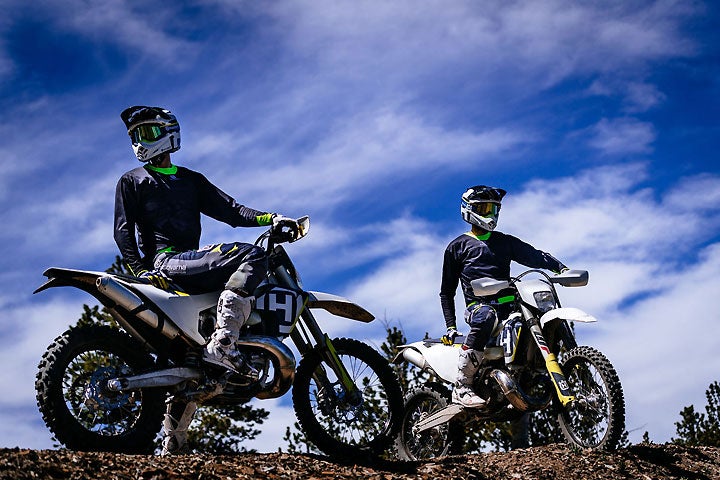
The Fine Print
The Husqvarna TE 250i and KTM 250 XC-W TPI are Euro 4-emissions-compliant enduros that will be coming here in very limited quantities. Most of the 250s and all of the 300s produced for the 2018 model year will be sold in overseas markets where they can be homologated for street use. In America, they’re competition-only machines which meet neither EPA nor DOT regulations for riding on public roads. In California, that means they’ll be seasonal-use, “red-sticker” bikes on public land. Learn more about the Golden State’s stringent emissions regulations here.
Our Two-Stroke Future
“Riders should embrace clean-burning engine technology, including the new fuel-injected two-strokes from KTM and Husqvarna,” encouraged Don Amador, one of America’s foremost authorities on off-road vehicle recreation and land-use advocacy.
“Sound-compliant exhaust and clean emissions from OHVs,” he insisted, “are a key element in the land-use equation that I believe will help keep trails open and even allow for new riding opportunities for current and future generations.”
We couldn’t agree more. Kudos to KTM Group for leading the way, but the publicly held company’s clean-burning innovations are much more than altruistic. Its corporate shareholders are looking for ways to sell more motorcycles. No doubt that many of them are counting on fuel injection to ignite a two-stroke revival.
More than a decade after Doug Henry won the 1997 Las Vegas Supercross on Yamaha’s ground-breaking YZ400M prototype, it took a relatively tiny Austrian company to figure out the key to selling a bazillion four-stroke dirt bikes. With a push of the button, KTM’s Orange Brigade recruitment program kicked into high gear when electric starters made kickstarting a thing of the past.
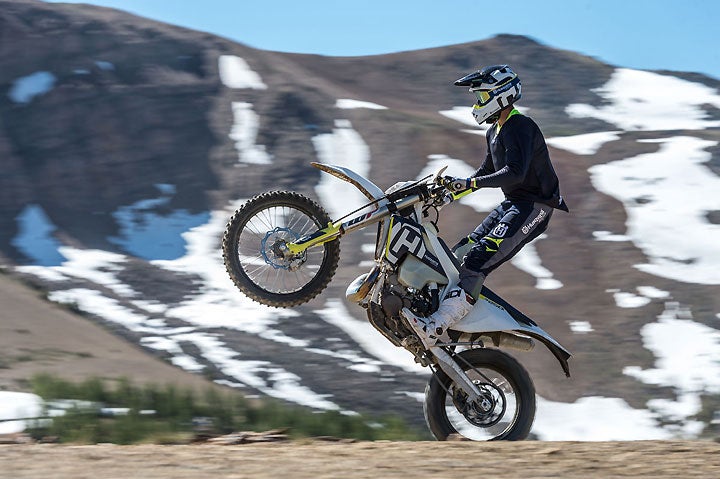
American dirtbike riders won’t buy into two-stroke F.I. technology because it’s environmentally friendly. Ironically, we’ll buy into this new generation of two-strokes because our heavy, complicated, electric-started, fuel-injected four-strokes have made us lazy and technically averse. The thought of riding lighter, more powerful bikes with the same convenient, hard-to-screw-up technology that works perfectly at any elevation is a no-brainer.
Technical Similarities
Think of the fuel-injected motors in the Husqvarna TE250i and KTM 250 XC-W TPI as twins separated at birth, then installed in each brand’s latest enduro chassis and clothed in the colors of its respective tribe.
The Husqvarna TE 250i and KTM 250 WC-W TPI engines wear 39mm Dell ‘Orto throttle bodies instead of 38mm Mikuni carbs. Their fuel-injection systems have five sensors which capture and relay air pressure, throttle position and temperature readings many times per second to sophisticated electronic brains.
Acting upon this intel, they command small, electric fuel and oil pumps to precisely mete out these liquids from the bikes’ 2.4-gallon gas tanks and 700cc oil reservoirs hidden in their frames just south of the steering heads. The mixture is then combined and ignited in the cylinder’s transfer ports. These automated processes relegate barbaric trailside tuning and hand-mixing ratio-right fuel/oil cocktails to dirty, complicated chores of a bygone past.
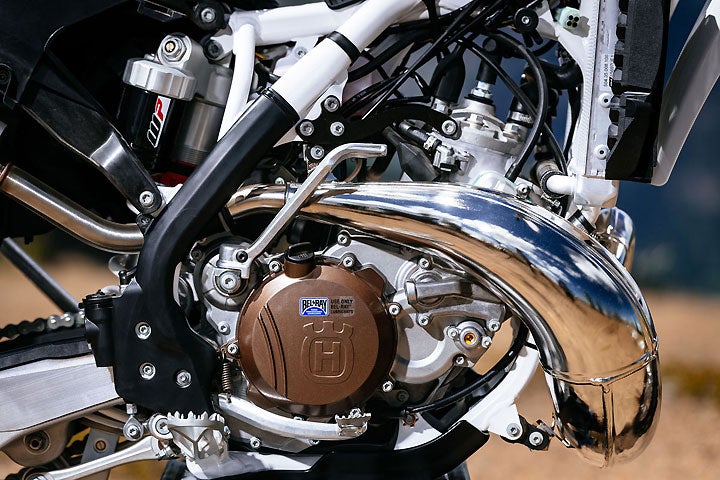
That’s right, riding two-strokes up and down mountains no longer requires a degree from the Motorcycle Mechanics Institute. No need to disassemble carburetors to lower or raise their delicate needles via tiny circlips, swap brass main and pilot jets stamped with madding tiny numbers stating their relative size, or remember which way to turn external air screws for fine-tuning.
Kicking more dirt on decades-old designs, the Husqvarna TE 250i and KTM 250 XC-W TPI also feature the convenience of electric starting, in addition to counterbalancers that quell vibration, making them smoother and, therefore, less fatiguing to ride throughout long days in their saddles.
Familial Differences
Aside from their corporate colors, these fuel-injected 250s are most easily distinguished by their rear suspension systems. Like all Huskys, the TEi’s shock is actuated through a linkage and its subframe is made of carbon fiber-reinforced polyamide. The XC-W TPI’s chassis utilizes KTM’s lighter, linkageless PDS setup and an aluminum subframe. Nonetheless, their seat heights are identical, at 37.8 inches.
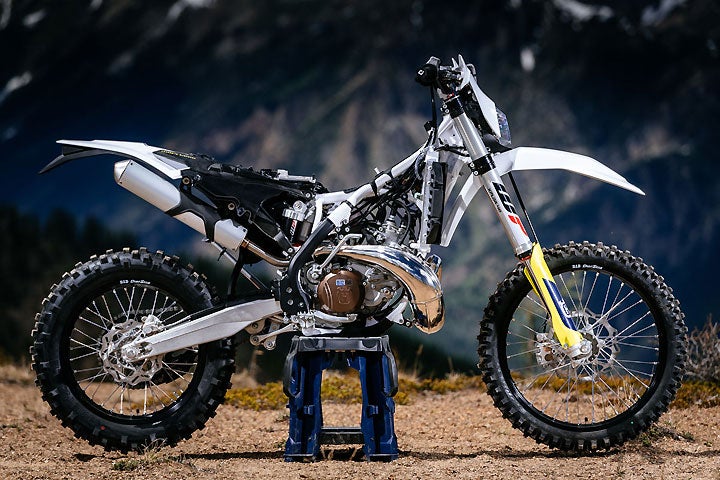
Both bikes have WP Explor 48 forks, but their build sheets then take a few small diversions. The Husky gets new Magura braking and hydraulic components instead of Brembos, DID Dirt Star rims in place of the KTM’s Giants and a new ProTaper handlebar rather than Neken. All told, the Husky costs $200 more and is five pounds heavier than the 227-pound KTM.
That said, the KTM 250 XC-W TPI is almost nine pounds lighter than the $9599 250 EXC-F, its closest relative in KTM’s four-stroke enduro lineup, which, to be fair, is a street-legal dual-sporter saddled with turn signals and other government-mandated equipment. KTM’s stripped-down, $9199 250 XC-F four-stroke is actually eight pounds lighter than its new 250cc XC-W TPI two-stroke.
KTM’s fuel-injected off-roader is two pounds lighter than Japan’s sole competition-only two-stroke off-road bike, the $7499 Yamaha YZ250X. For that extra $1900, the KTM comes with an electric starter, counterbalancer, headlight, tail light, skid plate and, oh yeah, fuel- and oil-injection systems.
Can Two-Strokes Compete?
Could fuel-injected two strokes turn the tables on long-dominant four-strokes? Apparently, the jury is still out, carefully considering this question.
Strangely enough, though, just one day after KTM unveiled its fuel-injected 250 XC-W, Ryan Dungey announced his retirement from racing, a week after clinching a fourth Supercross championship for the Orange Brigade. Conspiracy theories abound, but we think this is just a coincidence.
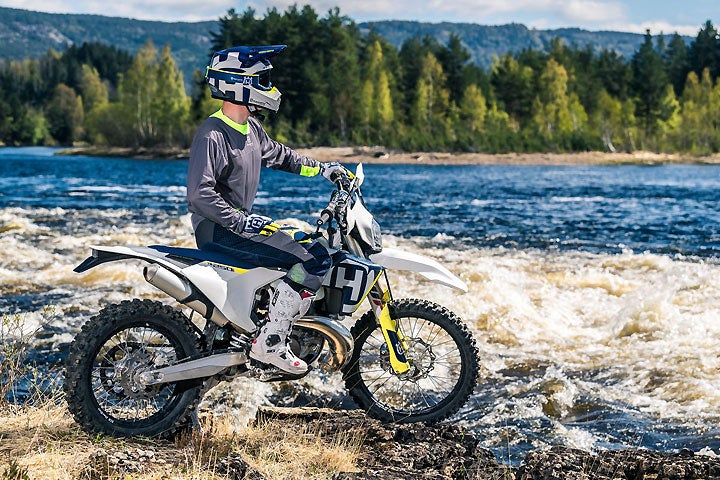
Five-time Grand National Cross-Country Champion, Kailub Russell proved that two-strokes can be competitive at the highest levels in the right environments. After winning his second GNCC title in 2014 with two rounds remaining, the FMF/KTM factory rider traded his 350cc four-stroke for a 150cc two-stroke and won the final event of the year by 90 seconds over his season-long rivals.
From the podium, he said, “I want to thank everyone who told me I couldn’t win on a 150, because you gave me the motivation to come here and do my best.”
He was enthusiastic when asked about the prospect of repeating that feat this year on KTM’s 250cc TPI bike. Apparently, he would have jumped at the chance: “I haven’t ridden a two-stroke since the Ironman race in 2014,” said the 27-year-old from Booneville, North Carolina. “That was a great day and my most memorable win! I have yet to ride the new fuel-injected two-stroke, but would have loved the opportunity to race it at this year’s Ironman. That track provides great traction to still allow two-strokes to be competitive at the top level of GNCC racing.”
Clearly, more evidence is needed to answer this question. The fuel-injected two-stroke era has just arrived. It’s only a matter of time before we find out.